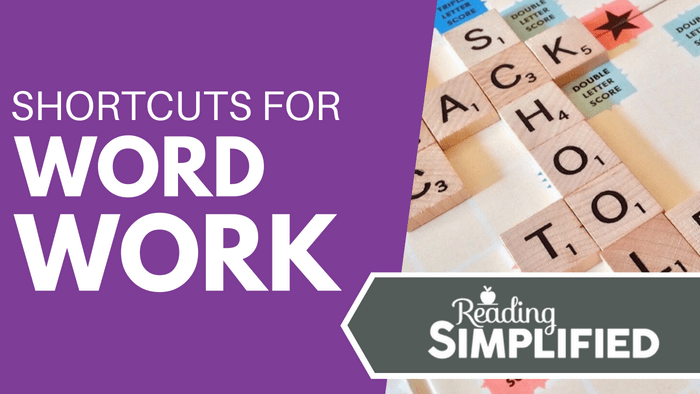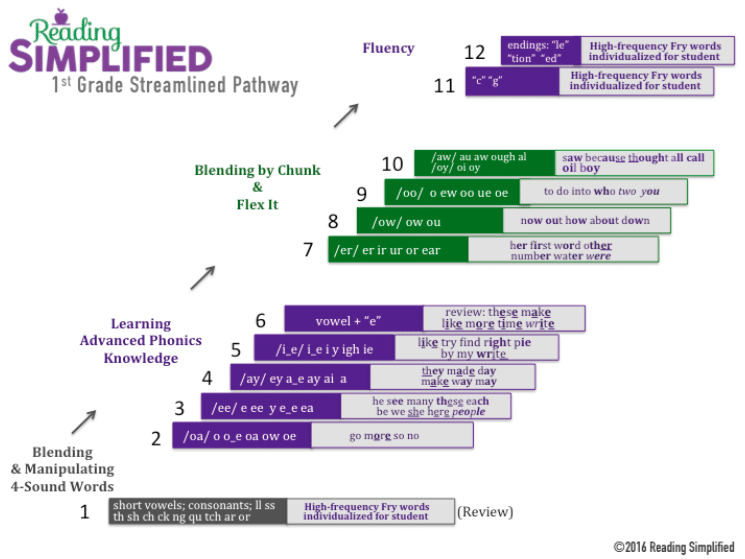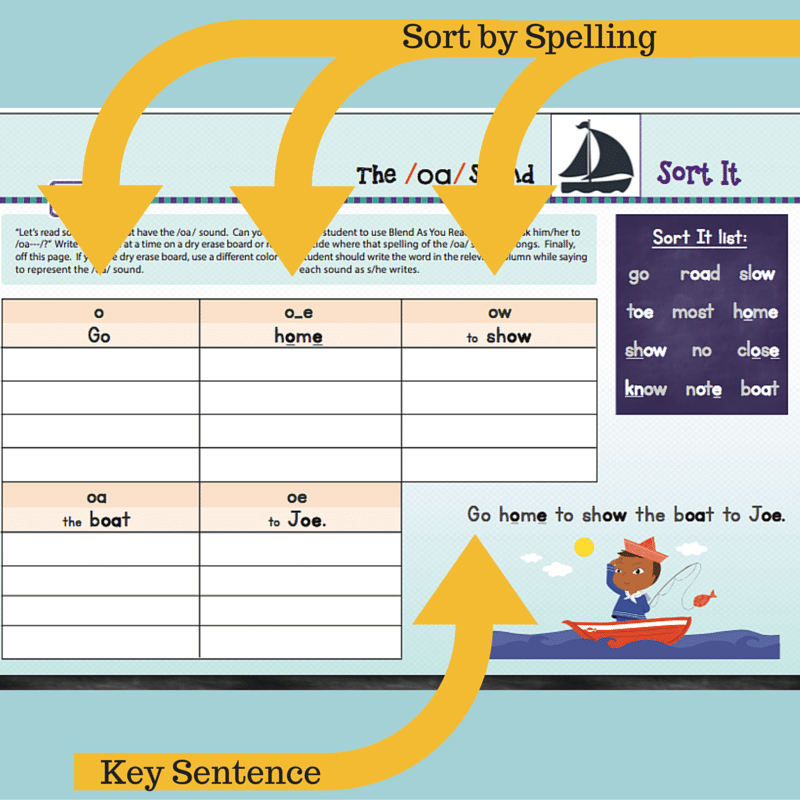
Our classroom reading instruction time can often feel rushed and ineffective. Why?
Well, most of us can only dedicate 10 to 20 minutes of reading time per day. There’s so much to cover in such a short space of time that it’s almost impossible to get it all done using traditional teaching methods.
According to several different research studies, children read an average of one minute a day in the classroom. How crazy is that? You can’t get much done in a minute (unless you have superpowers!).
Rather than wasting valuable time during small-group reading instruction, I suggest you try and make the most out of every minute…
At Reading Simplified, we teach a streamlined approach to reading instruction that speeds up the process and accelerates student’s reading achievement. I’m going to show you how you can optimize reading time in a small group setting using the word work activities Read It and Sort It.
To watch a video where I talk about these key reading activities hit play below or read on for more...
What is Read It?
Read It teaches a beginning or struggling reader the Blend As You Read decoding strategy. This technique focuses on blending the sounds of a word as they go, rather than taking the traditional “sound-sound-sound-word” approach.
Learning to put the sounds together is the first step toward being a good decoder. If you want to find out more about Read It, you can visit the “One and Done…Nearly” blog post for more information.
Here are some shortcut tips for Read It:
1. Prep your words ahead of time
Don’t let those first few minutes of instructional time slip through your fingers!
Prepare your words for the session in advance.
I also suggest that you choose your words carefully. Pick words that are tightly connected to the student’s most pressing need. If a student struggles with short vowels, give them short vowel words so that they can practice, etc.
2. Give different words out
If you want to give different words out to different students, do it!
You can vary the words by different levels of phonemic difficulty where CVC is the easiest and CCVCC is the hardest. It’s easier to differentiate words when you’re using word cards, so I suggest sticking to those!
3. Start with one word at a time
Whether you’re just starting with a new student or it’s the beginning of the year, I suggest you start a word work session with one word at a time.
You don’t want to overwhelm the students and starting with one word at a time gives them a chance to work out the kinks, learn the activity and get some much-needed practice with the Blend As You Read decoding strategy.
4. Cover the word before Write & Say
Whenever I’m working with a small group, I usually try and do some one-to-one coaching with the students. So, I will give a student one word and have them do the Blend As You Read strategy.
Then, I remove the word and have everybody in the group write and say the word together. Doing this allows everyone in the group to practice the same word while also giving students private coaching time with the teacher.
5. Watch CAREFULLY for Blend As You Read
It’s important to keep an eye on your students because Blend As You Read is hard work, especially for struggling readers who would rather do anything but read. So, make sure that each student is participating properly and don’t be easily fooled!
A student may be able to say a three-sound word like “HAT” with no problem, but once they reach four, five or multi-syllable sounds, that sound-sound-sound-word approach breaks down. Be vigilant and eradicate that approach early on so you can bring the Blend As You Read strategy into their word work as soon as possible!
6. Vary student’s seating
When you’re sitting around a table in a small-group setting, it can be difficult to watch the kids who are sitting right next to you. But you can’t very well sit in the middle of the table and keep an eye on everyone at once, can you?
So, a way around this problem is to try and switch up the student’s seating. Moving kids around helps that dynamic, and it allows you to confirm whether or not each student is looking at the print and doing the Blend As You Read strategy.
7. Drop Read It at the right time
Once the group reaches 70% accuracy with the Blend As You Read strategy, it’s time to reduce or drop one-syllable and move the kid’s onto the Sort It strategy!
Read It is designed to tackle short vowels, but it doesn’t last forever.
You need to move the students on to make sure they fine-tune their advanced phonics level and don’t fall behind their peers!

What is Sort It?
Sort It helps kids acquire advanced phonics knowledge by teaching them to think of the sounds, not spelling. Grouping words by sounds is far more useful if you want high-frequency words to stick!
Sort It works side by side with Read It, which makes the transition from Read It to Sort It very smooth and easy for both you and your students. If you want to find out more about applying this activity, visit the “Power Up Your Phonics Activities” blog post.
Here are some great shortcuts for Sort It:
1. Watch CAREFULLY for Blend As You Read
You can apply a lot of the tips from Read It to Sort It, including this one!
Again, it’s super important to oversee each kid to make sure they’re using the Blend As You Read strategy. It’s very similar to Read It, but it’s slightly more difficult as it focuses on advanced phonics.
2. Watch/listen carefully for Write & Say
Kids are easily distracted, and they can become resistant to saying the sounds out loud as they go. So, you need to make sure that they are writing and saying each sound of the word. This step is crucial because it builds their sound-based decoding skills and makes them link sounds with symbols.
3. Give out different Sort It sheets
In the same way as you did with Read It, you should initially start with one word at a time and then later, add more words simultaneously.
You can also give out multiple Sort It sheets from the Reading Simplified Academy, which offers a variety of Sort It pages.
As students’ progress with their word work, you can give each of them a different sheet to prevent copying. It’s also important to try and target high-frequency sounds and high-frequency words to help improve student’s advanced phonics skills.
4. Set your target a new list every week
Instead of taking a slow-paced approach to advanced phonics, why not set ambitious goals that could yield months of growth compared to traditional instruction?
At Reading Simplified, we aim for most kids to learn a new target sound (or list of sounds!) each week. For example, you could spend a week on the /oa/ sound and practice each of its various spellings while doing Sort It activities including reading and re-reading text that targets the “o” sound.
When using the Streamlined Pathway, most kids will learn the advanced phonics needed to attack most English words within just 12 weeks – how amazing is that?

5. Review key sentences spaced out
Whenever we learn something new, we usually do it a lot more frequently in the early stages of learning. On the first few days, you might do it a few times per day, but it’s a good idea to test student’s memory by spacing out your review of key sentences.
A prime example of a key sentence is something like, “Go home to show the boat to Joe.” This key sentence is for the /oa/ sound and perfect for getting those high-frequency words to stick in a child’s mind!
So, I suggest following the first few days of practice, to leave it for a while and then return to it three or four days later. This way, you can see if their brain has remembered it fully. After all, the further back the mind has to go, the harder it works to pull out that memory!
6. Set fun word challenges
Liven things up in the classroom by setting some fun word work challenges that the entire group can participate in. After a while, kids can get bored and sluggish with the activity.
So, think about some fun challenges you can do such as “5 words in 3 minutes! Go!” Not only is this a fun activity to re-motivate the students, but they’re also reading a lot of words in a short time frame – bonus!
7. Cover the words up!
You don’t want your students to be too reliant on the cards so don’t forget to cover them up after they’ve read them! This forces them to think about the sounds they are hearing, rather than relying on their memory of how the word looks.
You want them to recognize the sound of the letters to help improve their phonemic awareness.




Waw, reading simplified has become my favourite place, every morning I check your new posts, prepare them and start them with my students… ?
I’m so happy to hear that you are having such success with your readers! 🙂 Thanks, Mashair!
I know this information is about Read it and Sort it…however, is there ever a time when you drop Switch It after going through all the lists?
After we go through all the levels to CCCVCC, then we move to nonsense CCCVCC. After that, we move to oral-only nonsense CCCVCC to try to really become automatic with this skill.
I am a teacher in New Zealand. I love your pedagogy. I need to follow your work please.
Super! We hope we can be a help Gisela! If you’re not already, please join our email list so you can get training info, resources, and announcements. Here’s a good place to get on our list: readingsimplified.com/switch-it